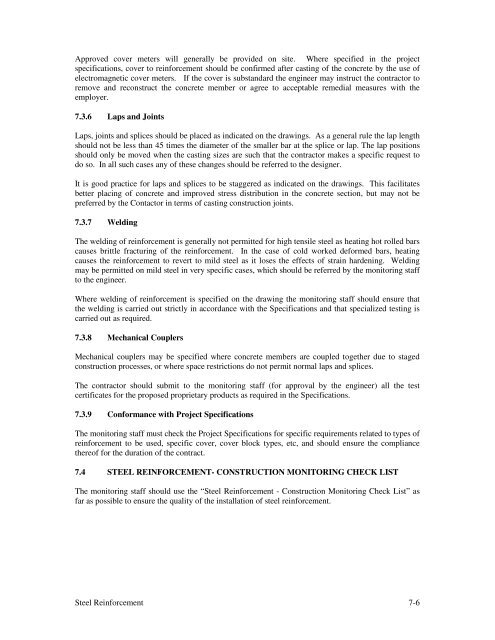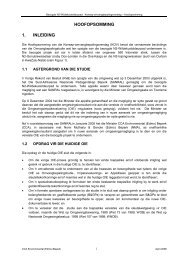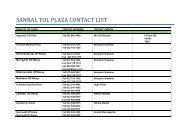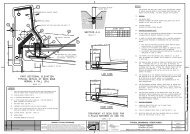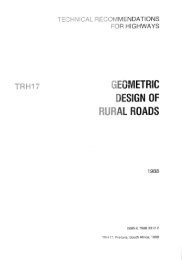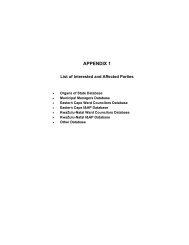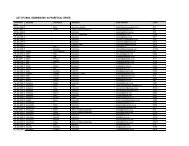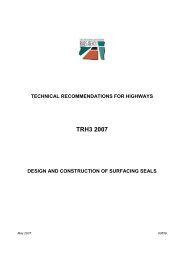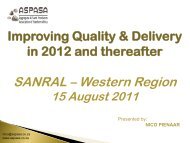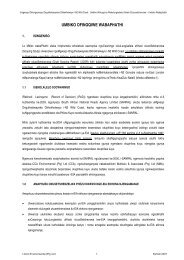CHAPTER 7 - STEEL REINFORCEMENT
CHAPTER 7 - STEEL REINFORCEMENT
CHAPTER 7 - STEEL REINFORCEMENT
You also want an ePaper? Increase the reach of your titles
YUMPU automatically turns print PDFs into web optimized ePapers that Google loves.
Approved cover meters will generally be provided on site. Where specified in the project<br />
specifications, cover to reinforcement should be confirmed after casting of the concrete by the use of<br />
electromagnetic cover meters. If the cover is substandard the engineer may instruct the contractor to<br />
remove and reconstruct the concrete member or agree to acceptable remedial measures with the<br />
employer.<br />
7.3.6 Laps and Joints<br />
Laps, joints and splices should be placed as indicated on the drawings. As a general rule the lap length<br />
should not be less than 45 times the diameter of the smaller bar at the splice or lap. The lap positions<br />
should only be moved when the casting sizes are such that the contractor makes a specific request to<br />
do so. In all such cases any of these changes should be referred to the designer.<br />
It is good practice for laps and splices to be staggered as indicated on the drawings. This facilitates<br />
better placing of concrete and improved stress distribution in the concrete section, but may not be<br />
preferred by the Contactor in terms of casting construction joints.<br />
7.3.7 Welding<br />
The welding of reinforcement is generally not permitted for high tensile steel as heating hot rolled bars<br />
causes brittle fracturing of the reinforcement. In the case of cold worked deformed bars, heating<br />
causes the reinforcement to revert to mild steel as it loses the effects of strain hardening. Welding<br />
may be permitted on mild steel in very specific cases, which should be referred by the monitoring staff<br />
to the engineer.<br />
Where welding of reinforcement is specified on the drawing the monitoring staff should ensure that<br />
the welding is carried out strictly in accordance with the Specifications and that specialized testing is<br />
carried out as required.<br />
7.3.8 Mechanical Couplers<br />
Mechanical couplers may be specified where concrete members are coupled together due to staged<br />
construction processes, or where space restrictions do not permit normal laps and splices.<br />
The contractor should submit to the monitoring staff (for approval by the engineer) all the test<br />
certificates for the proposed proprietary products as required in the Specifications.<br />
7.3.9 Conformance with Project Specifications<br />
The monitoring staff must check the Project Specifications for specific requirements related to types of<br />
reinforcement to be used, specific cover, cover block types, etc, and should ensure the compliance<br />
thereof for the duration of the contract.<br />
7.4 <strong>STEEL</strong> <strong>REINFORCEMENT</strong>- CONSTRUCTION MONITORING CHECK LIST<br />
The monitoring staff should use the “Steel Reinforcement - Construction Monitoring Check List” as<br />
far as possible to ensure the quality of the installation of steel reinforcement.<br />
Steel Reinforcement 7-6


